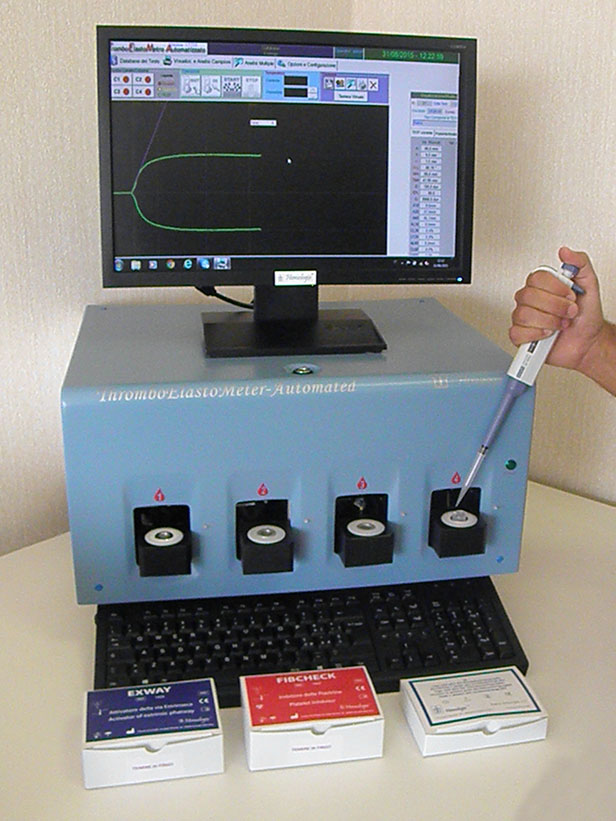The results from a thromboelastography test depend on a number of factors that influence the measurement, besides the actual blood sample.
These factors are mathematical, and each affects, some more some less, the relative accuracy and repeatability of the analysis: Between the cup and the pendulum, the free space provided for accommodating the sample, its size and shape, influence the time and the way the polymers create the link; the ionization of their surfaces determines also in which order these links are created, in some area will be faster than in others, to the point that, some Users claim that the old Hartert system using steel cup and pin gave results that are not comparable to the current results from plastic cup and pins.
The size and shape of the space available for the linking sample are determined by the depth of immersion of the pendulum in the cup, not only by their mechanical design.
It is notable, that the blood sample present in the cup for 15 to 120 minutes, will have the tendency to deposit the platelets on the bottom as time passes, so that a large part of the link created by the blood will be between the bottoms of the cup and of the pin.
The temperature of the sample influences as well the results: in the TEM-A the cup is heated and maintained under software control at body temperature, normally 37°C, unless the patient is cooled down, such as during a CABG.
The idea is to see how the blood sample behaves at the same temperature in which it is actually working in the body. There are two influencing factors : the temperature of the blood sample when it leaves the body (36-37°C), brought out in an environment of 21-25°C, such as found in most of the OR’s and ICU’s, begins to drop as soon as it fills the syringe and continues to drop until it is not back into the cup at 37°C. Therefore the amount of time occurring between drawing of the sample and start of the test causes a bias that is constant only if the pre-test procedure for thromboelastography is repeated exactly in the same way/time every time.
In respect of the procedure, also the size of the drawing needle/cannula and the speed used to draw (the pull on the syringe’s piston) is an influencing factor, particularly on the R parameter that measures the time for the sample to begin the clotting process, since the shear stress (the smaller the needle, or faster the pull, there will be a higher speed in drawing) can alter the coagulation process.
Shaking the blood sample is not a good idea for the same reason. In our experience with customers, we found important to stress to the personnel using the TEM-A, that the blood sample drawn is still a living thing reacting to the way it is handled and that repeating the pre-test procedures exactly every time will provide more accurate results.
Blood is still living even outside the vascular system !!

